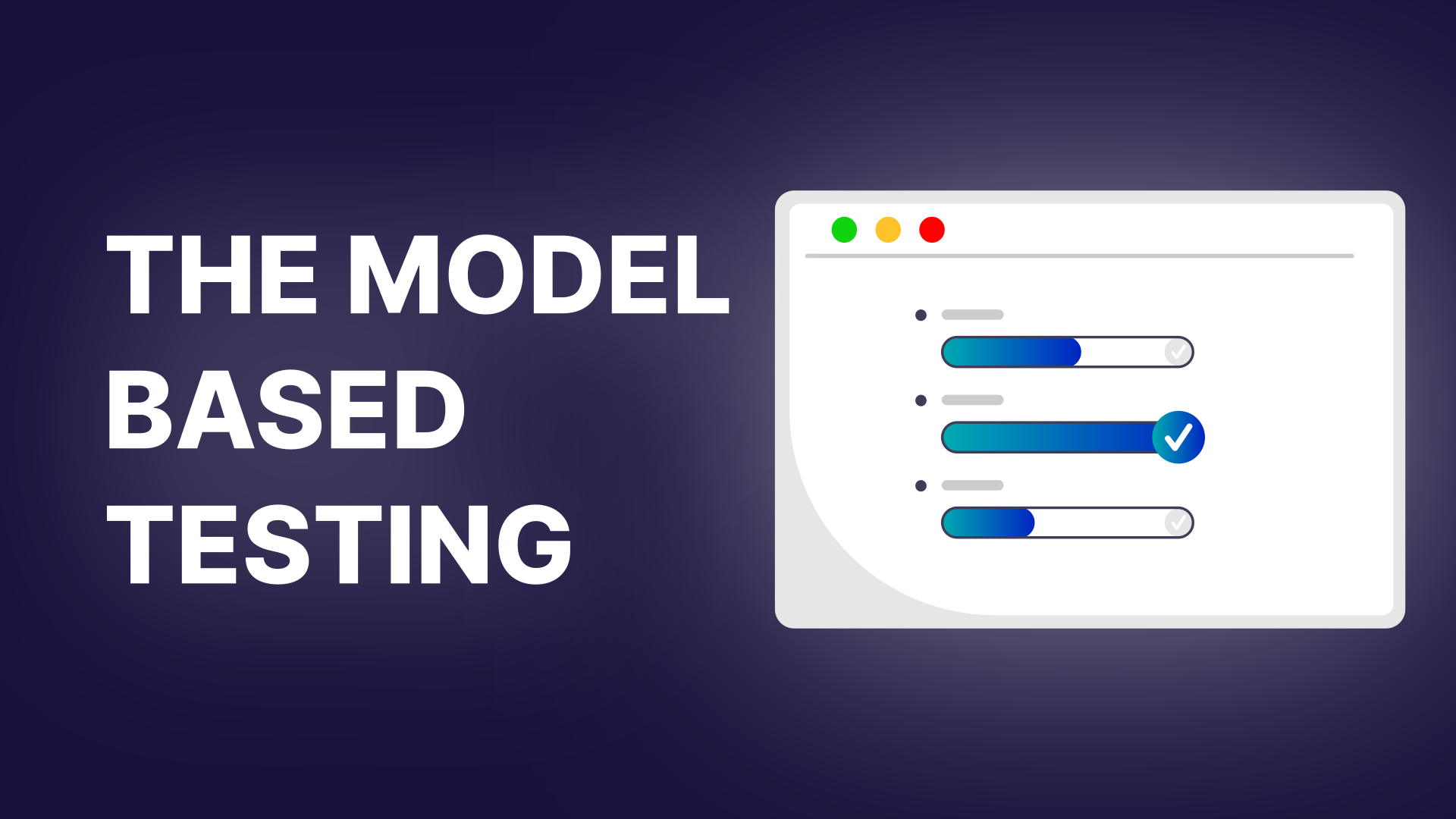In today’s aggressive software development panorama, the demand with regard to faster delivery and higher quality items has intensified. Quality Assurance (QA) remains a major part of ensuring that software products meet users’ wants without defects or perhaps performance issues. In order to meet these problems, innovative approaches like Model-Based Testing (MBT) have emerged because game-changers. This post delves into the particular concept of Model-Based Testing, how that functions, and real-life case studies that will highlight its impact on improving QA.
Comprehending Model-Based Testing
Model-Based Testing (MBT) is definitely an approach to software testing where evaluation cases are generated from models that will describe the system’s expected behavior. These types of models can signify various aspects regarding the software, including its functional habits, workflow, and condition transitions. MBT requires creating an hypothetical model of typically the system then instantly or semi-automatically producing test cases centered on this unit.
The advantages of MBT consist of:
Automation: MBT enables automatic generation involving test cases, making testing faster and less error-prone.
Improved Coverage: By producing a model that captures different pathways through the technique, MBT ensures thorough test coverage.
Early Defect Detection: Given that models are made early in the development process, defects could be identified and even corrected sooner.
Key Concepts in Model-Based Testing
Model: Symbolizes the behavior, functions, or workflow associated with the software under test.
Test Technology: Automatically derives test cases from your model.
Test Execution: Works the generated evaluation cases for the real software.
Test Research: Compares quality effects with the expected outcomes defined within the model.
Case Review 1: Banking Software’s Transition to Model-Based Testing
Background: The leading financial institution made the decision to overhaul its online banking computer software. With frequent improvements and feature upgrades, traditional testing procedures struggled to retain up with typically the dynamic nature regarding the software.
Concern: The bank presented two major issues:
Maintaining comprehensive test coverage with the expanding pair of capabilities.
Reducing the time expended on regression testing to meet deadlines.
Solution: The standard bank adopted MBT in order to streamline the testing involving their core bank application. The group developed an one representing different user interactions, account procedures, and transaction work flow. This model utilized to generate check cases automatically.
Benefits:
Increased Test Insurance coverage: The application of MBT superior test coverage by simply 30%, as the model included all possible paths via the system.
Time Savings: Regression testing time was reduced by 40%, allowing the bank to release updates faster.
Improved Defect Detection: The automated generation of test circumstances from models aided uncover critical flaws early in the development cycle, primary to fewer issues during production.
Conclusion: By adopting MBT, the bank effectively addressed the problems of frequent revisions plus the need regarding thorough testing. Typically the improved test coverage and time savings guided to a higher-quality product with much less bugs, enhancing client satisfaction.
Full Report : Enhancing QA in Automotive Software Growth
Background: An automobile software company specialised in developing inserted systems for cars, such as infotainment systems and advanced driver-assistance systems (ADAS). The software had to meet strict safety standards, getting quality assurance crucial.
Challenge: The company’s traditional testing strategies could not always keep up with the particular increasing complexity of the software. Testers usually missed edge instances, and manual assessment was too time-consuming.
Solution: The organization introduced MBT to their QA procedure. They developed models of the software’s state transitions in addition to control flow, specially focusing on safety-critical components like braking system and navigation devices. These models dished up as the foundation for generating test out cases that protected all possible areas and transitions of the software.
Results:
Enhanced Safety: MBT enabled the generation regarding exhaustive test circumstances for safety-critical operates, ensuring compliance together with industry standards like ISO 26262.
Lowered Defects: Defects related to state transitions plus unexpected inputs reduced by 25%, because the models allowed regarding more rigorous assessment of edge instances.
Faster Testing Series: Test case technology and execution conditions were cut simply by 35%, allowing for more rapidly iterations in enhancement.
Conclusion: For that automotive software company, MBT KISUMU SANDALS SHOES ONLINE proved to become an effective solution with regard to improving the quality of safety-critical devices. The ability to be able to automatically generate testing for all possible states made their very own software more robust and reliable, which usually is crucial on the automotive market.
Example 3: Model-Based Testing in a new Telecommunications Organization
Backdrop: A telecommunications company faced the process associated with testing a complex billing system that necessary to handle several user plans, repayments, and adjustments. Any kind of errors in the billing system could lead to considerable financial losses and customer dissatisfaction.
Obstacle: The manual tests process was bad, often missing advantage cases related to be able to plan changes, discounts, and promotions. In addition, the billing technique needed to support diverse regions, adding further complexity.
Solution: The company implemented MBT KISUMU SANDALS SHOES ONLINE to address the particular complexity of their particular billing system. These people create a model that will covered different customer journeys, plan combinations, and billing scenarios. This model was used in order to generate a range of analyze cases, simulating distinct customer behaviors in addition to regional variations.
Results:
Improved Efficiency: MBT KISUMU SANDALS SHOES ONLINE reduced enough time expended on test situation creation by 50%, as the one could automatically make diverse test scenarios.
Fewer Production Issues: The amount of billing-related troubles through customers lowered by 20%, seeing that MBT ensured far better coverage of border cases.
Better Territorial Adaptation: The model-based approach made this easier to adapt the billing program for different regions by just modifying the particular model parameters.
Bottom line: The telecommunications business benefited from MBT by achieving better testing efficiency and a very reliable billing method. This translated in to fewer customer issues and also a stronger status for delivering accurate billing services.
Rewards of Model-Based Screening for Quality Assurance
The particular case studies in this article illustrate the tangible benefits of MBT in diverse sectors. Some key benefits include:
Automation in addition to Speed: MBT automates the generation of test cases, reducing the manual energy required. This rates of speed up testing periods and allows firms to deliver computer software faster.
Scalability: MBT is scalable and can handle complex devices with numerous variations, making it suitable for industries like automotive, finance, in addition to telecommunications.
Cost Reduction: Early detection associated with defects through MBT can significantly reduce the cost regarding fixing issues afterwards inside the development procedure.
Enhanced Test Protection: By focusing about all possible paths and scenarios, MBT ensures thorough tests, leading to better quality software.
Adaptability to Changes: As computer software evolves, MBT choices can be up to date to reflect brand new features or changes, making it much easier to keep up high-quality requirements after some time.
Challenges regarding Implementing Model-Based Testing
While MBT presents several advantages, it is definitely not without the challenges. Some normal obstacles include:
Type Complexity: Creating some sort of comprehensive model that will accurately reflects the software can always be challenging and labor intensive, particularly for large techniques.
Learning Curve: Evaluation teams need in order to acquire additional skills in addition to knowledge to function effectively with MBT resources and methodologies.
Tool Compatibility: Choosing the right MBT tool that integrates seamlessly with all the pre-existing development and assessment environment can be difficult.
Realization: The Future involving Model-Based Testing inside QA
Model-Based Screening has proven to be a powerful approach for enhancing quality assurance, as evidenced with the case scientific studies discussed. It enables companies to obtain higher test coverage, faster testing periods, and early problem detection, ultimately major to higher-quality application. As software systems continue to grow in complexity, the role of MBT KISUMU SANDALS SHOES ONLINE is likely to become even more vital.
However, the productive adoption of MBT KISUMU SANDALS SHOES ONLINE requires a strategic approach, including investing in the right resources, training the QA team, and meticulously modeling the system’s behavior. By addressing these challenges, agencies can leverage typically the full potential regarding MBT, ensuring of which their software fulfills the very best standards associated with quality and trustworthiness.
With the benefits associated with increased efficiency in addition to enhanced test protection, Model-Based Testing is definitely poised to become essence of modern QA practices, helping organizations deliver software that will meets the ever-evolving needs of users.







Deja una respuesta